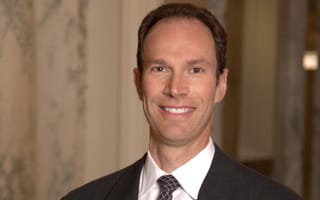


When state government grows spending excessively, Idaho families and small businesses pay more in taxes than necessary.
While many see Idaho as a conservative bastion, the veneer fades when addressing spending. The mainstream media doesn't want you to understand spending details because they favor big government.
Since we came out of the recession, Idaho spending has grown faster than the average for all 50 states.
Critics of this approach have said Idaho cut its general fund spending dramatically in 2010 and 2011. Start with the pre-recession peak of 2009, and the Idaho increase would be 10.6 percent - including fiscal 2017 - versus 23.8 percent for the other 49 states.
This misses two key points. Idaho could have used the recession to re-evaluate programs and results. Was it really necessary to return to the trend of long-term general fund spending?
Let's compare the totality of Idaho spending to other states.
Idaho lawmakers appropriate state, dedicated and federal funds each year when they budget. Looking at the total spending between 2009 and 2015, Idaho's number grew faster than the other states.
NASBO data shows Idaho's total spending decreased once between 2007 and 2015. Idaho lawmakers in 2011 spent $6.571 billion, which dropped to $6.235 billion in 2012 - a mere 5 percent reduction during a tough economic time for many Idaho families.
The data show no large cuts to overall state spending because federal dollars filled in the gaps.
From 2009 to 2015, Idaho's total spending increased 21.1, percent versus an 18.2 percent average for all other states, excluding capital spending.
Idaho is growing government faster than the 49-state average. There's no way around it.
This issue matters. A lot. Some economists believe overall economic growth would stall if lawmakers didn't grow government spending continuously.
Did these economists consider that people and businesses can spend and invest their own money better than the state?
The Idaho Constitution dictates that state lawmakers' single-most important duty is to decide how to spend the public's money. In fact, lawmakers can't end their business in Boise each year until passing a budget.
But the Idaho Constitution doesn't require lawmakers to spend all of the money all of the time. If that were the case, lawmakers could take some portion of the prior year remaining cash balance, add it to the projected revenue change and merely increase spending by that amount.
While lawmakers would satisfy the constitutional requirement, they would be derelict in their duties to taxpayers.
Politicians and bureaucrats often forget tax revenue belongs not to the various agencies of government, but rather to individuals and businesses.
We must ask government an important question regarding spending: Does shoveling more cash to an ever-growing bureaucracy benefit Idahoans more than letting people keep more of their own money?
Sometimes more government spending provides a direct public benefit. Is that always the case?
Instead of looking to constantly grow government, lawmakers should seek ways to cut spending, too. That would directly benefit all Idahoans.
Had lawmakers held spending to the levels of the 49 other states between 2009 and 2015, the Legislature could have reduced taxes by about $180 million.
Those tax cuts would have benefitted nearly all Idahoans, despite critics' claim to the contrary. When Lewiston Tribune editorialist Marty Trillhaase writes about the Legislature giving tax breaks to lawmakers' rich buddies, I wonder who he's discussing.
Idaho's progressive tax code has many bands with the top rate of 7.4 percent coming in at just under $11,000 for single filers. When lawmakers proposed dropping the top rate by 0.1 percent, liberals like Trillhaase lost their minds.
Sure, rich people would have seen tax reductions under the plan. But so would just about every full-time worker. Those workers could save more for college, spend more on basic needs or do whatever else they wanted with their money.
After all, it's their money, not the government's.
Note: This article was first published by the Lewiston Tribune.

